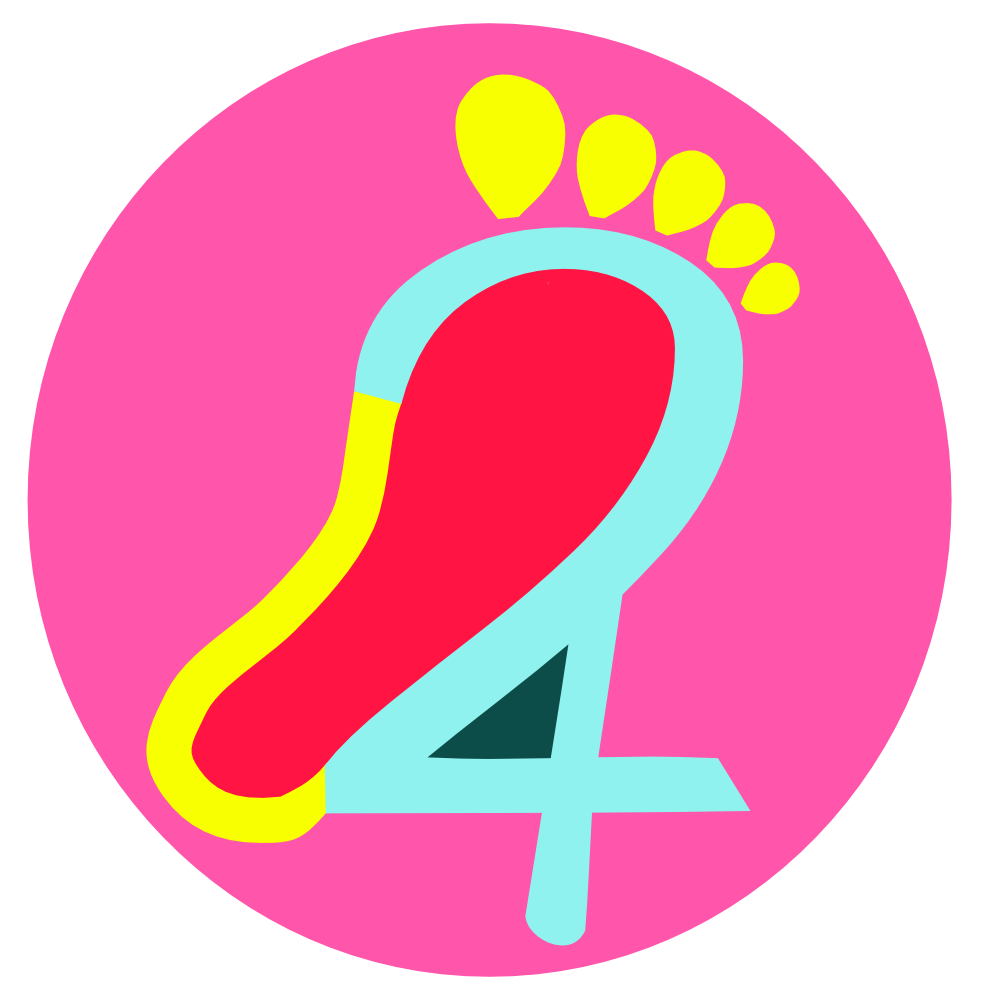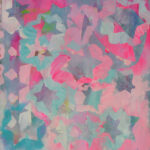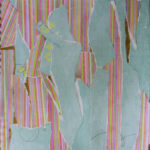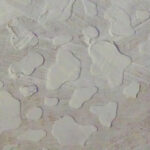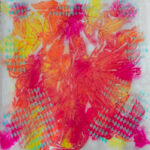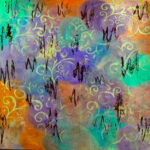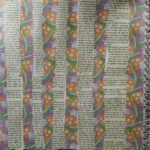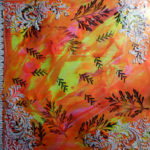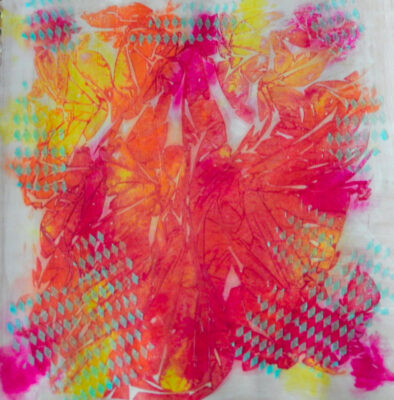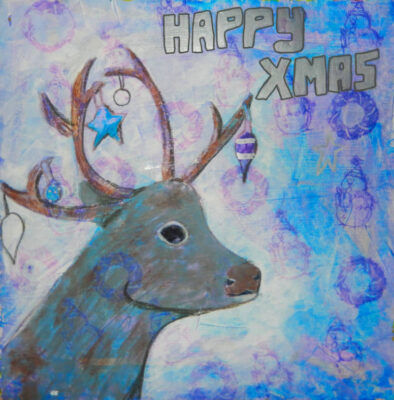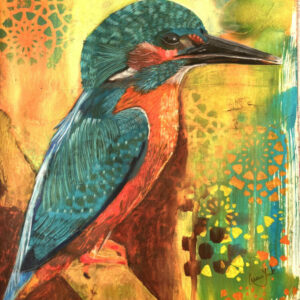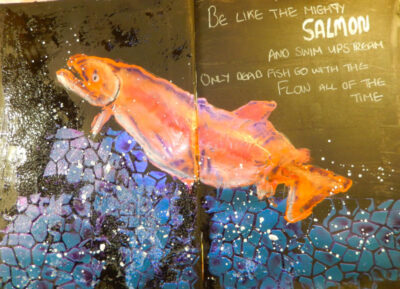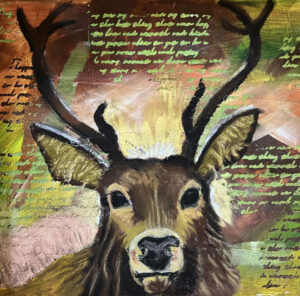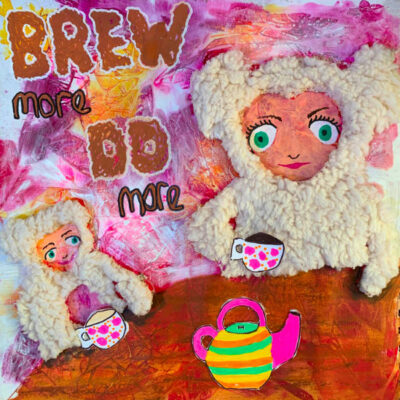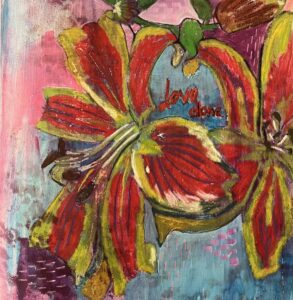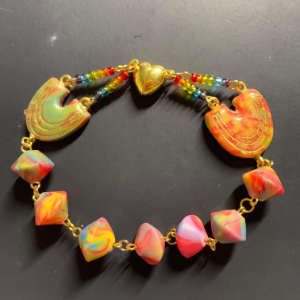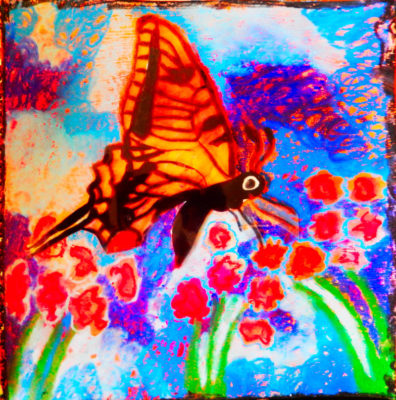In art journaling, background techniques are a great part of the fun. They are a chance to get some colour down on the page and in a layering approach in art journaling, background techniques are just the first few layers which may be covered up.
I tend to divide art journaling background techniques into 2 categories: media that stays put and media that needs fixing.
Art Journaling Background Techniques that Stay Put
Resources Supplies Needed
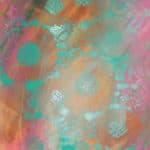
For the lacey patterns to the right I collected some off cuts of lace fabric from a local fabric merchant and used Kobra acrylic spray paint to spray through them. This dries really quickly and then stays put.
Anything that becomes permanent when dry is a great background making supply and good for mixed media background techniques.
Acrylic paint, for example, dries permanent so any technique using acrylic paint will stay put. With acrylic paint you can use a brayer and a number of paint colours and blend them on the page; apply paint through stencil; use a dry brush technique and more.
Collage is a great way to create a fun, colourful background. Although you can use glue to stick the papers down, I find it better to use matt medium as then you can seal the top of the collage and still work on top of it. Because glue has a glossy finish it tends to resist other media e.g. pens, inks, coloured pencils … but that might be exactly what you’re after!
When using stamping as an art journaling background technique, make sure you use inks that are permanent. Some inks are not, and will run if you then put something wet on top of them.
Acrylic ink is permanent when I dry so great for creating colourful backgrounds. It can also be used with some interesting techniques (see further down page). Inktense pencils are also permanent once they have been wet then dried. For supplies like Inktense pencils, gelatos, neocolour aquarelle crayons you can blend them out using gesso (clear or white) or matt medium. Another ‘trick’ is to blend out gelatos with baby wipes.
Art Journaling Background Techniques that Need Fixing
Some supplies just don’t want to stay still but you can encourage them to! Watercolours can move or muddy if they are wet again. Distress oxides just plain run, pastels lift off and dylusions sprays blur. Some mixed media art journaling techniques for keeping them still are to:
- activate/dilute with gesso/matt medium
- fix with a colourless fixative spray and then apply a layer of clear gesso on top
- use dry techniques on top of your beautiful background e.g. paper cutting, pastel, oil pastel
- use alcohol based media on top of water based media and vv e.g. alcohol markers over a watercolour background
Interesting Art Journaling Background Techniques
- Clingfilm: add watercolour or ink to the page and spritz with water if necessary to make sure it is very wet. Take a piece of clingfilm that is slightly larger than the page and lay it on top then scrunch it up on the page with you fingers to create folds. Leave to dry.
- Salt: add watercolour or ink to the page and spritz with water if necessary then sprinkle table salt around and leave to dry before brushing off the salt. Different effects can be had by using different sized salt crystals.
- Crumpled tissue: to create a really textural journaling background crumple some tissue and stick to page.
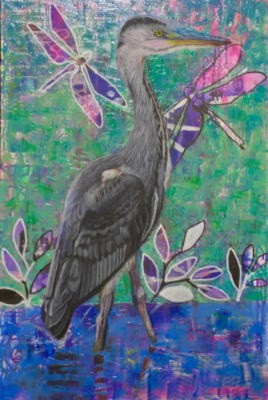
I used the clingfilm technique with ink in the background of this painting, Heron Stands in the Dee. I then added ink drips which you can see ‘through’ the leaves in the background.
And Here Are Some Art Journal Backgrounds
I hope this post helps you with some ‘background’ research for art journaling background techniques! Here are some more ideas for quick background ideas for art sketchbook.
Hugs, Ceri xx
